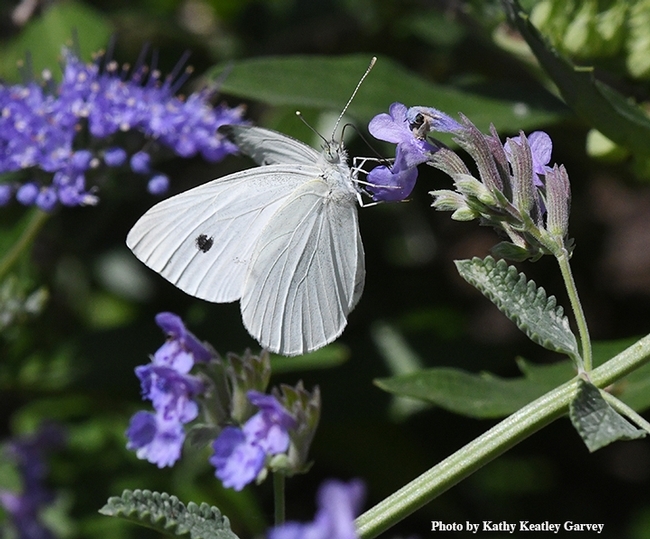- Author: Kathy Keatley Garvey

Throughout the year, we haven't been seeing this species, Pieris rapae, much--and neither has Art Shapiro, UC Davis distinguished professor of evolution and ecology who has been monitoring all the butterfly populations of the Central Valley since 1972. Usually, cabbage whites are quite prevalent. (See his research website.) As you may remember, he sponsors the annual "Beer-for-a-Butterfly Contest." The first person to collect the first cabbage white of the year--in Yolo, Sacramento or Solano counties--receives a pitcher of beer or its equivalent. It's all for scientific research; he's studying the first flights of this species.
But back to the two cabbage whites fluttering in our garden. One seemed quite interested in the other. A suitor?
In one image (below), they both raised their abdomens.
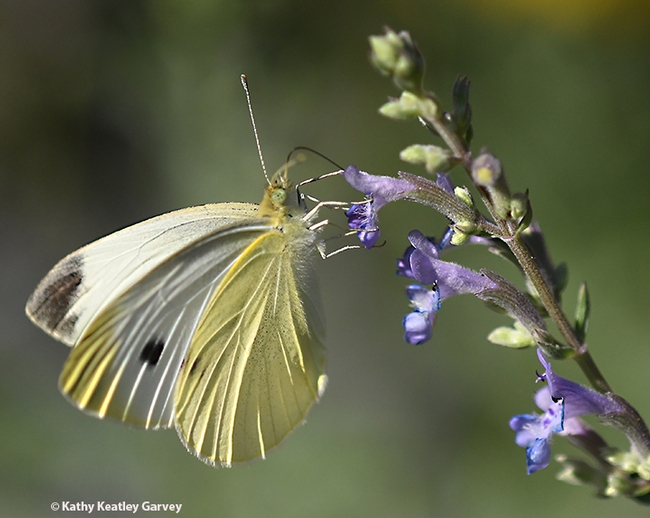
The cabbage white butterfly is also known as the European cabbage butterfly. Shapiro provides interesting information on his website about this species:
"Our only introduced butterfly--from the Old World--this is also one of our weediest, occurring in disturbed habitats from sea level to about 8000.' It even invades riparian woodland and montane coniferous forest habitats in summer. We are not certain how or when it reached our area. We know the species was introduced in southern Canada in the 1850s; the great Lepidopterist Samuel H. Scudder traced its spread, but was unable to resolve the history on the West Coast. It was not in San Francisco in the early 1880s, but was abundant by the time of the earthquake (1906). There is a mysterious specimen sent by the early collector Lorquin to Tryon Reakirt in Philadelphia, which may have been collected at Yreka in Gold Rush days. Was there an early introduction by the Spanish during the Mission Period?"
"In a typical year, after overwinter mortality, numbers of this species rise rapidly to a peak in late spring, exploiting almost unlimited quantities of host plants (weedy mustards). Then all the annual hosts (Brassica and Raphanus) die off by the 4th of July, and the butterfly is forced to contract down to local pockets of hosts that remain green in summer--cultivated Crucifers and Nasturtiums, the perennial mustard Hirschfeldia incana, and the aggressive weed Tall White-Top or Perennial Peppergrass, Lepidium latifolium. This last plant has invaded the western Great Basin, producing virtual monocultures along the Truckee River and other watercourses, and spreading the butterfly into areas where it had been rare or absent not so long ago."
Agriculturists probably wish the cabbage white butterflies would be more absent, as the larvae, known as "imported cabbageworms," are pests of crucifer crops such as cabbage, kale, bok choy and broccoli. (See the Pest Management Guidelines on the UC Statewide Integrated Pest Management website.)
As for the two in our garden this week, the female lingered for a little more nectar. The male butterfly fluttered silently away.
Rejection. Rejection in the butterfly world.



- Author: Kathy Keatley Garvey
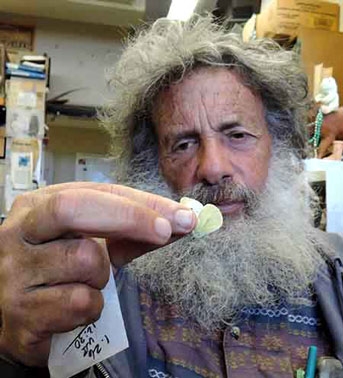
Shapiro spotted a cabbage white butterfly, Pieris rapae, at 1:55 p.m. on Saturday, Jan. 16 on the UC Davis campus, just south of the Jan Shrem and Maria Manetti Shrem Museum of Art, located at 254 Old Davis Road.
“At 1:55 p.m., I saw a male rapae flying a linear path along the edge of the waste ground between campus parking lot 1 and the railroad track, heading east,” he wrote in an email. “It stopped to nectar at a large Raphanus (wild radish) plant. That was directly south of the Manetti-Shrem Art Museum. I did not have a net and, there being no contest requiring a voucher, I did not care. It was 72F and clear with a trace of NE wind. I kept going. This is the earliest rapae since i.16.16 (Jan. 16, 2016)."
"Wouldn't it have been nice for the first one to be on the day of Biden's inauguration?" he asked.
Colleague Matthew Forister, the Trevor J. McMinn Research Professor of Biology at the University of Nevada and a former graduate student of Shapiro's, analyzes and graphs the annual data. "The observed day (Jan. 16) is a couple of days earlier than the line would have predicted--in a funny twist of fate, before adding the new data point, the predicted day for this year was inauguration day!" Shapiro launched the contest in 1972 as part of his scientific research to determine the first flight of the Pieris rapae.
The traditional rules: if you collect the first live cabbage white butterfly of the year in the three-county area of Sacramento, Solano and Yolo, and deliver it to 2320 Storer Hall, UC Davis campus, from 8 a.m. to 5 p.m., Monday through Friday (and detail the exact time, date and location of your capture), and it's judged the winner, you win a pitcher of beer or its equivalent. It's all in the name of research.
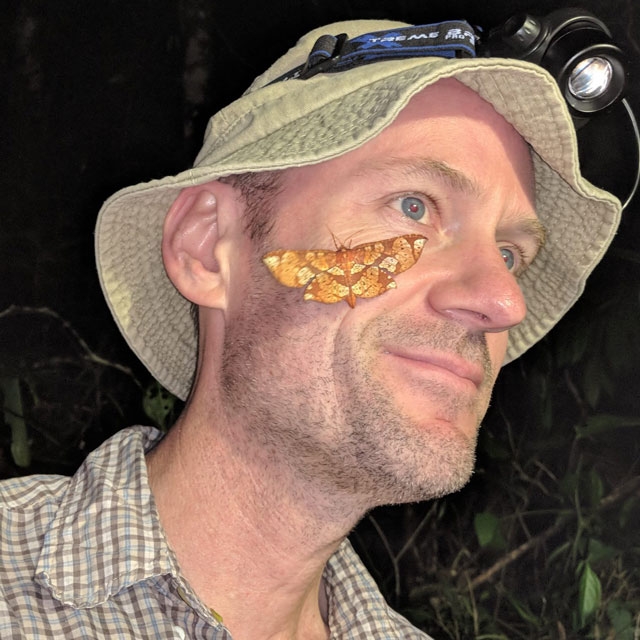
This year, however, Shapiro canceled the beer-for-a-butterfly contest "because (a) all the bars are closed open-endedly and (b) the level of circulating virus is so high that I am remaining in Davis and restricting myself to walkable sites to visit until it becomes less dangerous."
Since 1972, the first flight has varied from Jan. 1 to Feb. 22, averaging about Jan. 20.
In 2020, Shapiro spotted the first-cabbage-white-of-the-year at 11:16 a.m., Jan. 30 at Putah Creek Nature Park, Winters but didn't claim the prize as he didn't collect it. "It flew back and forth across Putah Creek and then departed the area, flying out of reach above the trees," he noted.
Shapiro, who usually finds the first butterflies, has been defeated only four times, and all by UC Davis graduate students: Jacob Montgomery in 2016; Adam Porter in 1983; and Sherri Graves and Rick VanBuskirk each defeated him in the late 1990s.
The list includes:
- 2019: Jan. 25: Art Shapiro collected the winner near the Suisun Yacht Club, Suisun City, Solano County
- 2018: Jan. 19: Art Shapiro collected the winner in West Sacramento, Yolo County
- 2017: Jan. 19: Art Shapiro collected the winner on the UC Davis campus
- 2016: Jan. 16: Jacob Montgomery, UC Davis graduate student, collected the winner in west Davis
- 2015: Jan. 26: Shapiro collected the winner in West Sacramento
- 2014: Jan. 14: Shapiro collected the winner in West Sacramento
- 2013: Jan. 21: Shapiro collected the winner in West Sacramento
- 2012: Jan. 8: Shapiro collected the winner in West Sacramento
- 2011: Jan. 31: Shapiro collected the winner in Suisun, Solano County
- 2010: Jan. 27: Shapiro collected the winner in West Sacramento
The butterfly inhabits vacant lots, fields and gardens where its host plants, weedy mustards, grow. In its larval stage, it's known as the imported cabbageworm, and is a major pest of cole crops, including cabbage, broccoli, Brussels sprouts, cauliflower, and kale.
No doubt Shapiro will also remember Jan. 16 as a "five-in-one-day." He saw five different butterfly species as he walked around the Old Davis Road area and the north central residential area. The four others: Red admiral, Vanessa atalanta; Gulf Fritillary, Agraulis vanillae; West Coast Lady, Vanessa Annabella; and the Mourning Cloak, Nymphalis antiopa.
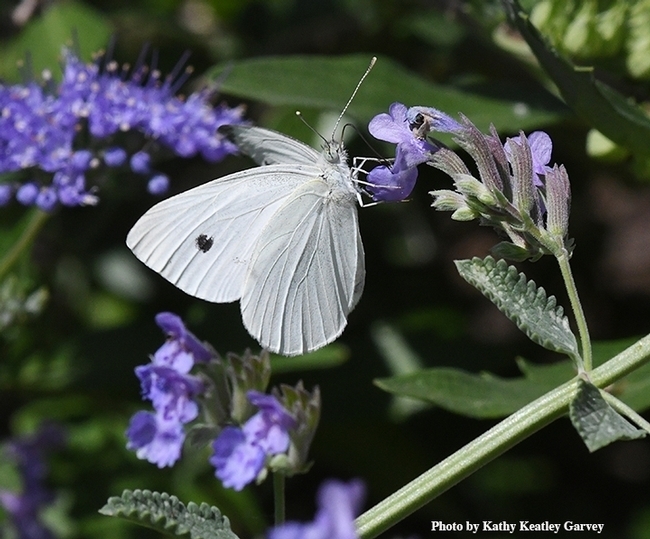
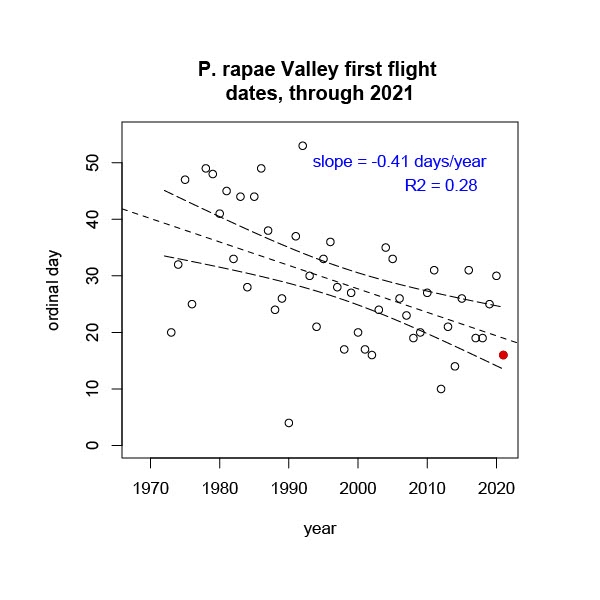
- Author: Kathy Keatley Garvey
No suds for a bug in 2021.
Due to the COVID-19 pandemic precautions, butterfly guru Art Shapiro, UC Davis distinguished professor of evolution and ecology, won't be hosting his annual Beer-for-a-Butterfly Contest, which he launched in 1972 as part of his scientific research to determine the first flight of the cabbage white butterfly, Pieris rapae.
Or, as he says, the contest is in "diapause."
The traditional rules: if you collect the first live cabbage white butterfly of the year in the three-county area of Sacramento, Solano and Yolo, and deliver it to 2320 Storer Hall, UC Davis campus, from 8 a.m. to 5 p.m., Monday through Friday (and detail the exact time, date and location of your capture), and it's judged the winner, you win a pitcher of beer or its equivalent.
Since 1972, the first flight has varied from Jan. 1 to Feb. 22, averaging about Jan. 20.
Who won in 2020? Technically, there was no winner, as Shapiro didn't collect the one he spotted in Winters at 11:16 a.m. on Jan. 30, 2020 at the Putah Creek Nature Park. "It flew back and forth across Putah Creek and then departed the area, flying out of reach above the trees," he noted. He waited around for 90 minutes to see if it would return. It did not.
No one else came forth with a cabbage white so the date of Jan. 30 stands as the first of 2020.
The point of the contest "is to get the earliest possible flight date for statistical purposes," the professor related. "The rules require that the animal be captured and brought in alive to be verified. That way no one can falsely claim to have seen one, or misidentify something else as a cabbage white."
Shapiro, who maintains a research website at http://butterfly.ucdavis.edu, has been defeated only four times, and all by UC Davis graduate students: Jacob Montgomery in 2016; Adam Porter in 1983; and Sherri Graves and Rick VanBuskirk each defeated him in the late 1990s.
In 2019. Shapiro collected the first cabbage white butterfly near the Suisun Yacht Club, Suisun City, Solano County, at 1:12 p.m., Friday, Jan. 25. "It was the earliest recorded in Suisun City in 47 seasons."
In recent years, most winners collected the butterflies in Yolo County:
- 2018: Jan. 19: Art Shapiro collected the winner in West Sacramento, Yolo County
- 2017: Jan. 19: Art Shapiro collected the winner on the UC Davis campus
- 2016: Jan. 16: Jacob Montgomery, UC Davis graduate student, collected the winner in west Davis
- 2015: Jan. 26: Shapiro collected the winner in West Sacramento
- 2014: Jan. 14: Shapiro collected the winner in West Sacramento
- 2013: Jan. 21: Shapiro collected the winner in West Sacramento
- 2012: Jan. 8: Shapiro collected the winner in West Sacramento
- 2011: Jan. 31: Shapiro collected the winner in Suisun, Solano County
- 2010: Jan. 27: Shapiro collected the winner in West Sacramento
The butterfly inhabits vacant lots, fields and gardens where its host plants, weedymustards, grow. In its larval stage, it's known as the importedcabbageworm, and is a major pest of cole crops, including cabbage, broccoli, Brussels sprouts, cauliflower, collards, kale, and kohlrabi. The larvae "chew large, irregular holes in leaves, bore into heads, and drop greenish brown fecal pellets that may contaminate the marketed product, according to the UC Statewide Integrated Pest Management Program (UC IPM) Pest Management Guidelines. "Seedlings may be damaged, but most losses are due to damage to marketed parts of the plant."
"The adult cabbage butterfly is white with one to four black spots on the wings; they are often seen fluttering around the fields," UC IPM says. "The whitish, rocket-shaped eggs are laid singly on the undersides of leaves. The cabbageworm is active throughout the year in California."
Bottom line: COVID canceled the 2021 scientific contest for Pieris rapae ("on your mark, get set, don't go!) but it can't cancel an adult's preference for beer. A beer for no butterfly?
And by the way, Professor Shapiro says "I will gladly accept records. I will neither sample nor go out for a beer until I'm vaccinated." (Email him at amshapiro@ucdavis.edu)
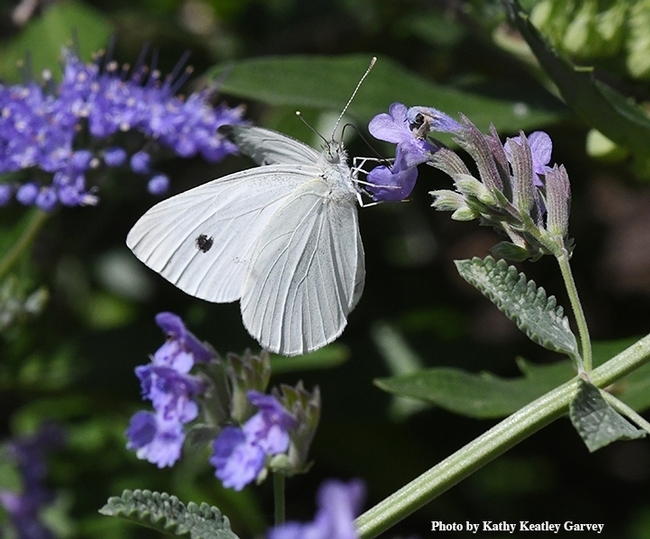
- Author: Kathy Keatley Garvey
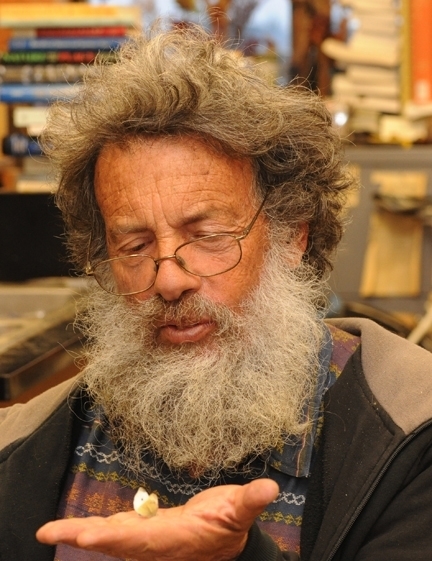
No winner this year.
Shapiro, a UC Davis distinguished professor of evolution and ecology, saw one in Winters, Yolo County, but he couldn't collect it. No bug. No suds. No winner.
So, Shapiro, who has sponsored the annual contest since 1972 to determine the bug's first flight of the year in the three-county area of Sacramento, Solano and Yolo, isn't claiming victory because he couldn't net it. No specimen. No winner. No beer.
Shapiro spotted the cabbage white in Winters at 11:16 a.m. on Jan. 30 at the Putah Creek Nature Park, but it proved elusive. "It flew back and forth across Putah Creek and then departed the area, flying out of reach above the trees," he noted. He waited around for 90 minutes to see if it would return. It did not.
The point of the contest, the professor says, "is to get the earliest possible flight date for statistical purposes. The rules require that the animal be captured and brought in alive to be verified. That way no one can falsely claim to have seen one, or misidentify something else as a cabbage white."
Shapiro, known for his expertise on butterflies (he maintains a research website at http://butterfly.ucdavis.edu/, quipped that he has “100% confidence” in his own ability to sight-identify the species. This is the first time in the 40-year-plus history of the contest that he saw the first one but could not catch it.
"The record stands," he says, "but in fairness to everybody else, I can't declare myself the winner without the specimen. Since the first date is known, there is no scientific need for further records."
But to be fair to potential competitors, Shapiro decided that if anyone brought a cabbage white into Storer Hall before 5 p.m., Monday, Feb. 3, that person would be declared the winner and get the beer.
But no one did. So at 6 p.m., Monday, Shapiro declared the contest closed, with no winner.
The Jan. 30 date is the latest since 2011 and the second-latest since 2005, his records show.
Shapiro warns that this does not mean global warming is a hoax!
And yes, he intends to enjoy a beer with a friend sometime later this week. Suds for a bug, winner or not.
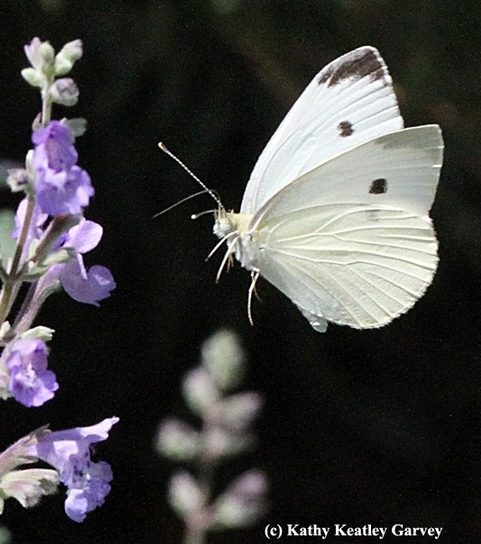
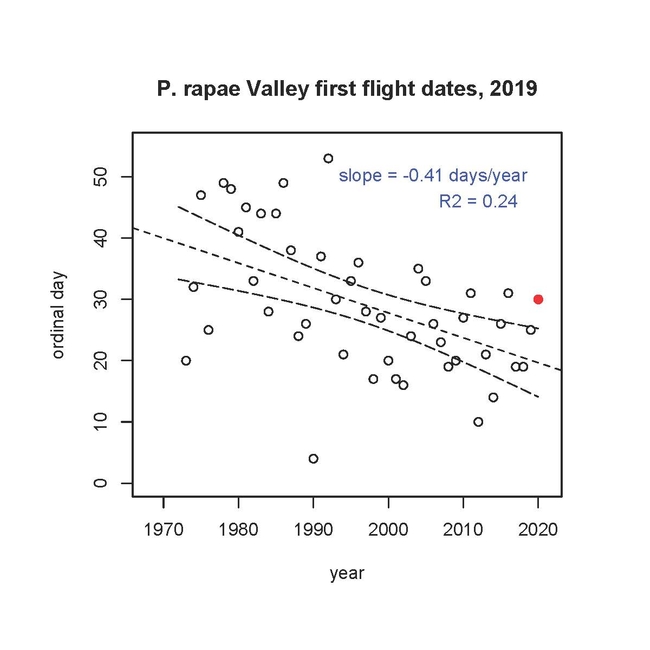
- Author: Kathy Keatley Garvey
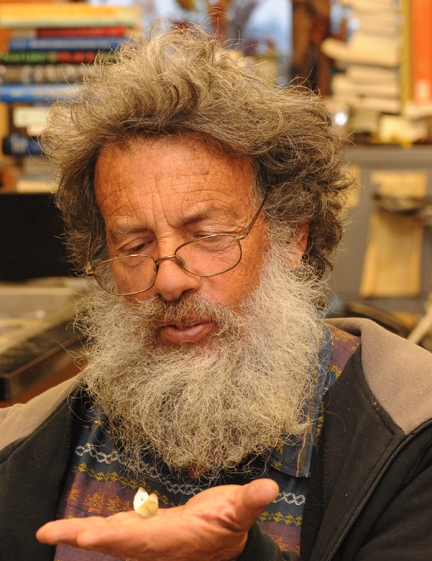
If you collect the first cabbage white butterfly of the year in the three-county area of Sacramento, Solano and Yolo, you'll win a pitcher of beer or its equivalent, compliments of Art Shapiro, UC Davis distinguished professor of evolution and ecology.
Shapiro is sponsoring his 48th annual Beer-for-a-Butterfly Contest and it's all in the name of research--to determine the first flight of the cabbage white butterfly, Pieris rapae. Since 1972, when he launched the contest, the first flight has varied from Jan. 1 to Feb. 22, averaging about Jan. 20.
The butterfly inhabits vacant lots, fields and gardens where its host plants, weedy mustards, grow. The male is white. The female is often slightly buffy; the "underside of the hindwing and apex of the forewing may be distinctly yellow and normally have a gray cast,” Shapiro said. “The black dots and apical spot on the upperside tend to be faint or even to disappear really early in the season.”
The contest rules include:
- It must be an adult (no caterpillars or pupae) and be captured outdoors.
- It must be delivered alive to the department office, 2320 Storer Hall, UC Davis, during work hours, 8 a.m. to 5 p.m., Monday through Friday, with the full data (exact time, date and location of the capture) and your name, address, phone number and/or e-mail. The receptionist will certify that it is alive and refrigerate it. (If you collect it on a weekend or holiday, keep it in a refrigerator; do not freeze. A few days in the fridge will not harm it, Shapiro says.)
- Shapiro is the sole judge.
Shapiro, who maintains a research website at http://butterfly.ucdavis.edu, usually wins his own contest and did so again in 2019. He collected the winner near the Suisun Yacht Club, Suisun City, Solano County, at 1:12 p.m., Friday, Jan. 25.
Shapiro has been defeated only four times, and all by UC Davis graduate students: Jacob Montgomery in 2016; Adam Porter in 1983; and Sherri Graves and Rick VanBuskirk each defeated him in the late 1990s.
The list of winners, dates and locations since 2010:
- 2019: Jan. 25: Art Shapiro collected the winner near the Suisun Yacht Club,Solano County
- 2018: Jan. 19: Art Shapiro collected the winner in West Sacramento, Yolo County
- 2017: Jan. 19: Art Shapiro collected the winner on the UC Davis campus
- 2016: Jan. 16: Jacob Montgomery, UC Davis graduate student, collected the winner in west Davis
- 2015: Jan. 26: Shapiro collected the winner in West Sacramento
- 2014: Jan. 14: Shapiro collected the winner in West Sacramento
- 2013: Jan. 21: Shapiro collected the winner in West Sacramento
- 2012: Jan. 8: Shapiro collected the winner in West Sacramento
- 2011: Jan. 31: Shapiro collected the winner in Suisun, Solano County
- 2010: Jan. 27: Shapiro collected the winner in West Sacramento
The 2019 winner was the earliest recorded in Suisun City in 47 seasons, said Shapiro. That day he noticed dandelions, mustard, radish and mallow in bloom and a few Picris (sunflower family) in the area. "But near the Suisun Yacht Club (703 Civic Center Blvd., Suisun City) at 1:12 p.m. I saw a rapae. It didn't land and I had to take it in the air. It's a small and very heavily infuscated male.” It had just eclosed that day, he said.
The UC Davis professor has monitored butterfly population trends on a transect across central California since 1972 and records the information on his research website. His 10 sites stretch from the Sacramento River Delta through the Sacramento Valley and Sierra Nevada mountains to the high desert of the Western Great Basin. He visits his sites every two weeks "to record what's out" from spring to fall, weather permitting. He has studied more than 160 species of butterflies in his transect. The largest and oldest database in North America, it was recently cited by British conservation biologist Chris Thomas in a worldwide study of insect biomass.
Shapiro and illustrator Timothy D. Manolis co-authored A Field Guide to Butterflies of the San Francisco Bay and Sacramento Valley Regions, published in 2007 by the University of California Press. Shapiro is a Fellow of the American Association for the Advancement of Science, the Royal Entomological Society, and the California Academy of Sciences.
Meanwhile, if you want to learn more about this butterfly, see the data on the UC Integrated Pest Management Program website. In its larval stage (cabbageworm), it's a pest.
And if you want a free pitcher of beer (or its equivalent), don't leave home without your net!
